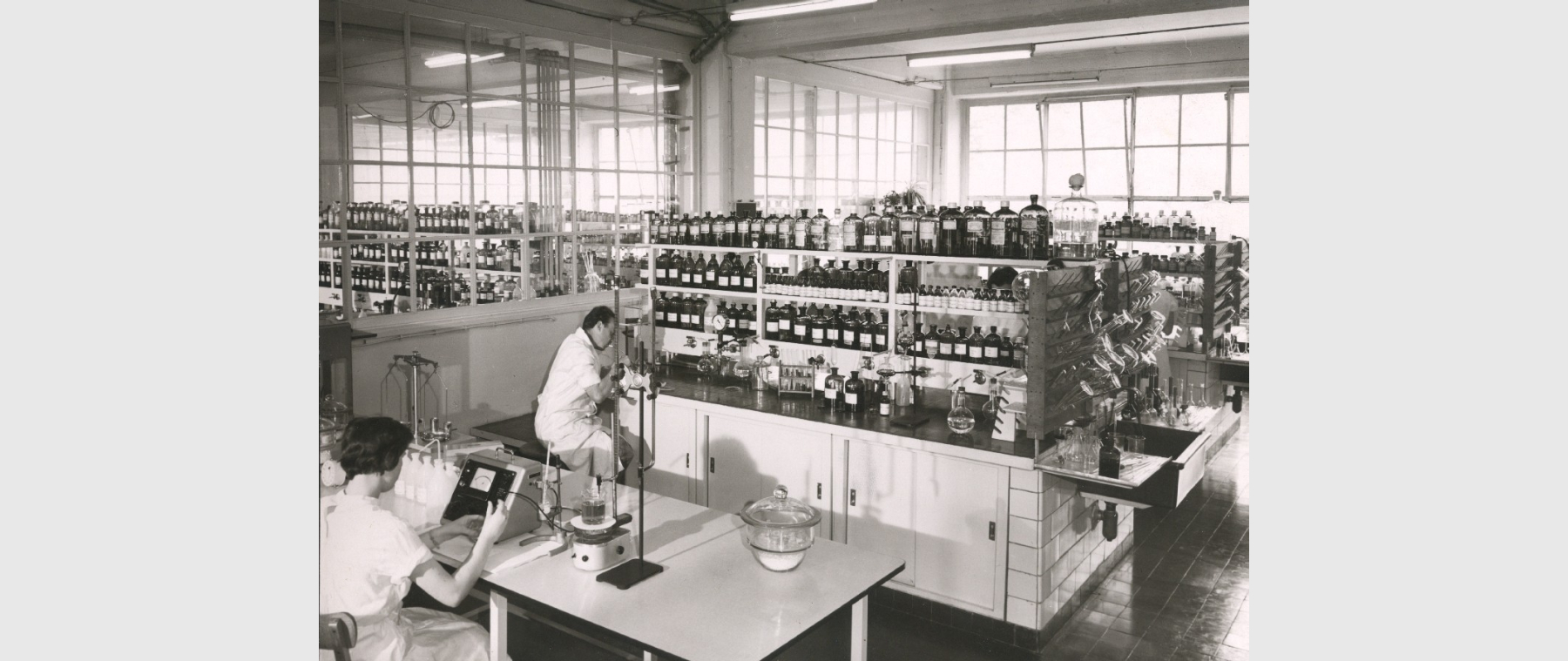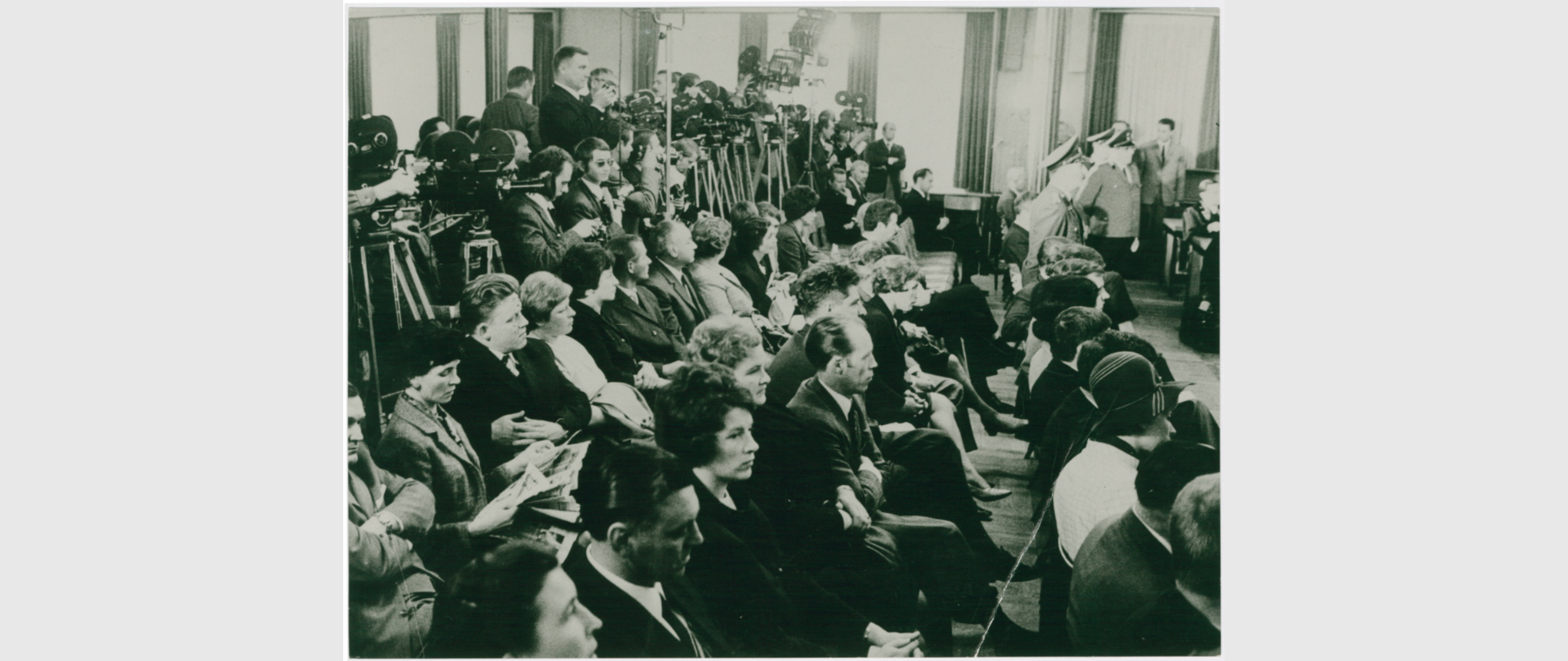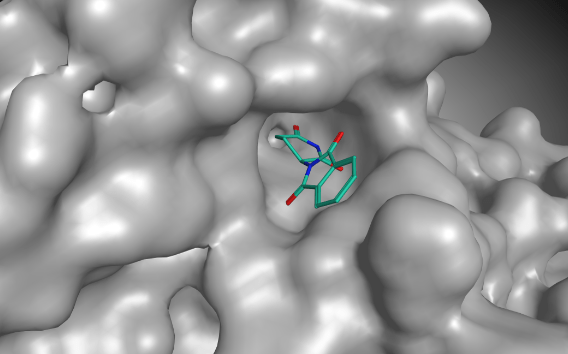

The history of the Thalidomide tragedy
The Thalidomide tragedy will always be part of our company’s history. We deeply regret the wide-ranging consequences for the people affected by this medicine, and for their families. We will never forget what happened.
Our engagement today is also a direct reflection of our sense of responsibility for this tragedy. The Grünenthal Foundation supports Thalidomide-affected people quickly and sustainably in improving their individual living situation and is in regular contact with them to understand their needs in detail. In 2023, the German Federal Association of Thalidomide Victims and the Grünenthal Foundation formalized this exchange and created the Dialogue Forum. It is also part of our commitment today to keep the memory of this tragedy alive by sharing information that is historically accurate and by presenting the facts correctly.
In this spirit, this chapter provides an overview of the specific history of Thalidomide in Germany and worldwide. It explains what Thalidomide is and what it is used for. It describes how Thalidomide was distributed internationally. It provides insights into what happened in the “Thalidomide criminal trial” in Germany as well as the consequences of that trial. And it shares details about what is being done to help people affected by Thalidomide today.
The history of the Thalidomide tragedy is multi-faceted and complex. For this reason, we have taken great care to include different perspectives in the presentation and to back up the most essential events addressed in this text with external sources.
Content
What was Thalidomide and what was it used for?
How Thalidomide was developed and tested
Market approval and commercialisation
When was Thalidomide taken off the market?
The fate of the “Thalidomide children”
What was the “Thalidomide trial” ?
The substantive issues and results of the Thalidomide trial
Was there political interference in the Thalidomide trial?
The settlement and the creation of the German Federal Contergan Foundation
The international dimension of the Thalidomide tragedy
The role of Frances Kelsey and the FDA: Thalidomide in the United States
How the findings related to Thalidomide changed our handling of medications in Germany
What was Thalidomide and what was it used for?
Thalidomide was a sleep aid and sedative sold in many countries worldwide. In Germany, the drug was sold between 1957 and 1961 under the name “Contergan” and other brands. The medication was also taken by women for morning sickness during pregnancy because doctors found Thalidomide to have a positive effect. However, Grünenthal itself did not promote taking the medication for morning sickness.
In November 1961, it became known that the drug caused severe deformities in newborn children if taken between the 34th and 50th day of pregnancy, counting from the first day of the last menstrual cycle.
The fate of the Thalidomide babies and subsequent court proceedings in Germany are still known today as the “Thalidomide scandal”.
Data and Facts
Data and Facts
Data and Facts
Data and Facts
How Thalidomide was developed and tested
Grünenthal scientists Dr. Wilhelm Kunz and Dr. Herbert Keller synthesized Thalidomide for the first time in March 1954. They created the substance as a by-product of their research into glutamic acid. Creating new substances first and then attempting to find a possible use for them was a common approach in the pharmaceutical industry at the time. Grünenthal registered a patent for Thalidomide in the same year.With today’s knowledge of Thalidomide’s side effects, it may be difficult to understand why the product was allowed to be sold in the first place.
Our information shows that the development and introduction of Thalidomide corresponded to the state of knowledge and the applicable standards in the pharmaceutical industry at that time. Thalidomide was first tested for its pharmacodynamic properties in animal experiments. In addition to acute toxicity, semi-chronic toxicity was also tested. It proved to be a substance with a central depressant effect and simultaneous non-toxicity. Clinical testing of Thalidomide began in the spring of 1955. The aim was to prove and establish the efficacy, reliability and safety of a new drug under medical supervision. These standards were substantially altered in the subsequent years as a reaction to what was learned from the Thalidomide tragedy.
It is important to bear in mind that knowledge about the safety of medicinal products was not as far advanced in the 1950s and 1960s as it is today. There were no guidelines for developing, producing, or marketing pharmaceuticals as there are now, neither in Germany nor in most other countries. The procedures for authorizing and monitoring medicines that we know today were only established after the Thalidomide tragedy.
At the time, animal testing to identify whether an active ingredient of a pharmaceutical substance could harm unborn life was not standard in pharmaceuticals. Such tests were not required in Germany or other countries. Consequently, Thalidomide was also not tested on pregnant animals.
Market approval and commercialisation
In August 1956, the Ministry of the Interior of North Rhine-Westphalia issued the authorization for the manufacture of Contergan (25 mg) and Contergan Forte (100 mg). The product was then made available nationwide starting on 1 October, 1957.
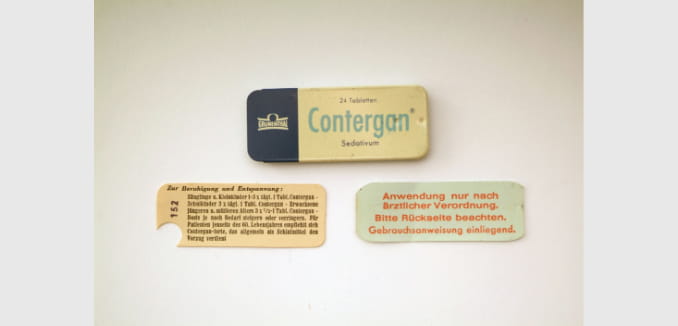
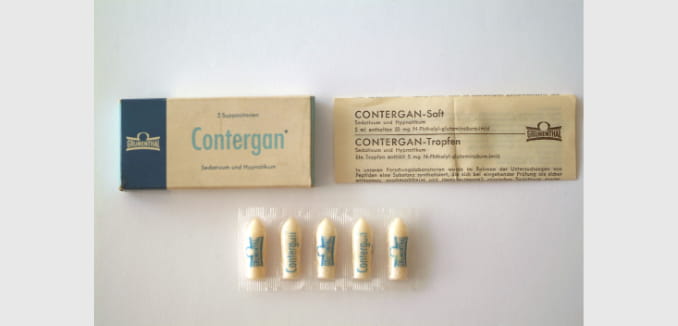
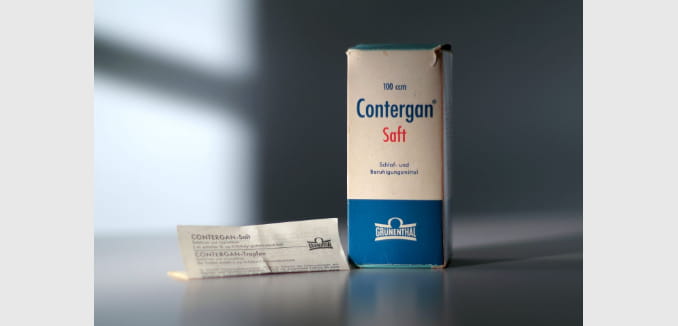
Thalidomide rapidly developed into one of the most popular sleeping aids in Germany. Grünenthal promoted it as sleeping aid and sedative1, but Grünenthal did not marked Thalidomide for the indication of morning sickness for pregnant women nor addressed the drug to pregnant women specifically. However, doctors also recommended it to pregnant women because it was assumed to offer low side effects and non-toxicity at that time (compared to the barbiturates that were commonly used).
Medicinal products containing Thalidomide were also sold internationally. Thalidomide-containing medicines were marketed by licensing and distribution partners of Grünenthal in many countries, under names including Distaval and Softenon.
When was Thalidomide taken off the German market?
Grünenthal received isolated reports from doctors about possible nerve damage (polyneuritis) in patients treated with Thalidomide starting in 1959. Other suspected cases of nerve damage multiplied throughout 1960, leading Grünenthal to include warnings about side effects such as “prickling and a sensation of numbness in the hands and/or feet” in the packaging insert for Thalidomide. In May 1961, Grünenthal applied for prescription-only status because of the reported cases of polyneuritis. The Thalidomide trial showed that our company’s actions with this side effect risk were not adequate to meet the requirements for a proper, conscientious drug manufacturer.
At the same time, towards the end of the 1950s, some doctors noted that an increasing number of children with deformities were born in Germany. However, the actual cause remained hidden at first. The pediatrician Karl Beck alleged in a newspaper article in May 1958 that nuclear tests were responsible for the disabilities.2
The detection of the teratogenic effect of Thalidomide is inseparably linked with the doctors Widukind Lenz and William McBride. The number of cases involving deformities increased in Lenz’ clinic in the city of Hamburg as well as in McBride’s hospital in Australia. Both doctors attempted to find the causes and, independently, came to the assumption that Thalidomide could be a possible cause.

Lenz was a paediatrician and lecturer in human genetics based in the city of Hamburg. In his investigations, he came to the conclusion that Thalidomide could have a teratogenic effect. He informed Grünenthal about his suspicions on 15 November 1961. He could not prove his suspicion at that time – on 8 November 1961, Lenz wrote to a colleague that “medications (...) [do] not [seem] probable as a cause.”2

McBride was an Australian gynaecologist at Crown Street Women’s Hospital in Sydney. A midwife in his hospital expressed the suspicion that Thalidomide might be responsible for the deformities in some babies born in the hospital. He then informed Distillers, the company marketing Thalidomide-containing medical products in Australia. Its parent company in the UK then wrote to Grünenthal about McBride's suspicion on 24 November 1961.
Dr. Lenz mentioned his suspicion to Grünenthal in a first phone call on 15 November 1961. Over the following days, Grünenthal repeatedly met with Dr. Lenz and with representatives of health authorities to understand the basis of his suspicion. On Sunday, 26 November 1961, Grünenthal informed the responsible German health authority of its decision to take the drug off the market. From the next Monday, 27 November 1961 onwards, Grünenthal took its Thalidomide-containing medicines off the German market and informed its international distribution and license partners of this step accordingly.
The fate of the “Thalidomide children”
The German Federal Contergan Foundation estimates that around 10,000 babies worldwide were born4 with deformities that could be attributed to Thalidomide. About half of them died at birth or shortly afterwards. The deformities of the Thalidomide babies included shortened arms and legs, as well as underdeveloped outer ears or inner organs, among others.
Through our dialogue with Thalidomide-affected people, we have learned that the possibility of living a self-determined life is especially meaningful to them. That is as true now as it was then.
Today, affected individuals receive life-long financial support through the German Federal Contergan Foundation. In addition, the Grünenthal Foundation provides in kind support for living area modifications and transportation. Since individual mobility and a barrier-free home are currently the most important factors, leading to more participation in everyday life.
Thalidomide-affected people are now in their sixties. That means with growing age their physical limitations cause them greater difficulties. It will be important to engage in regular, open discussions about future solutions and projects that provide additional support for these changing needs. For this reason, among other, the German Federal Association of Thalidomide Victims and the Grünenthal Foundation created the Dialogue Forum in 2023. For more information, see our responsibility.
What was the “Thalidomide trial”?
The “Thalidomide trial” was a criminal proceeding against nine senior Grünenthal employees. The trial began on 27 May 1968 in Alsdorf before the First Grand Criminal Chamber of the Regional Court of Aachen and was concluded two and a half years later, on 18 December 1970.
This Thalidomide criminal trial and a separate out-of-court settlement related to civil compensation created legal certainty in Germany.
The aim of the Thalidomide trial, under criminal law, was to determine whether senior employees of our company were culpably responsible through their actions – or lack thereof. The court found it difficult to give a clear answer to the question of the defendants' guilt. The judges concluded that the individual guilt of the defendants would have to be assessed as low, despite the serious consequences. Based on this, the trial was discontinued without judgement.
The financial compensation of affected people and their families was fixed in an out-of-court settlement under civil law. It was agreed that a foundation would be set up under public law. Grünenthal committed to pay 100 million German Marks into this foundation. The federal government paid an additional 100 million German Marks. This is how the German Federal Contergan Foundation was created, laying the basis for extensive on-going financial support for Thalidomide-affected people.
The historic events are outlined in more detail below.
The Thalidomide trial has long been considered the most complex criminal proceedings in German legal history. The trial ran for a total of 283 trial days, during which dozens of witnesses and medical experts were heard.
Data and Facts
Data and Facts
Data and Facts
Data and Facts
Data and Facts
The trial before the Court of Aachen had been preceded by a period of intense investigation by the Public Prosecutor’s Office. The investigative proceedings by the Public Prosecutor’s Office had been initiated in December 1961 and led to the admittance of the indictment by the Aachen Criminal Court in January 1968.
The actual trial lasted an additional two and a half years, until the Aachen Criminal Court terminated it in December 1970. At that point, four of the nine accused had been eliminated from the trial due to illness or death. The Presiding Judge of the Court also had to be replaced during the proceedings due to illness.
The substantive issues and results of the Thalidomide trial
The Thalidomide trial focused on clarifying whether actions or omissions of the accused employees of our company caused nerve damage in adults or deformities in children in utero, and whether such damage could be assigned to the culpable conduct of such former employees.
The criminal proceedings did not, however, address whether the affected families had claims for compensation from the company. Those were to be clarified in separate civil proceedings.
The Court found it difficult to reach a definitive answer to the culpability of the people accused. The trial was finally terminated without judgment. The Court substantiated its decision in approximately 100 pages that it issued in December 1970.
We summarize the results of the decision below.
- It was proven that taking Thalidomide could result in nerve damage (Polyneuritis). With regard to this nerve damage, Grünenthal had not met the requirements for a proper, conscientious pharmaceutical manufacturer.
In addition, the Court ruled that the continuation of the criminal proceedings was not proportionate. There were two reasons for this.
- Even in the hypothetical case that, after an orderly completion of the proceedings, misconduct by the accused had been found, the individual culpability of the accused would have been considered minor, despite the serious consequences. Among other factors, the Court took into consideration that there had been no explicit advertising for the use of Thalidomide during pregnancy. In addition, the company withdrew its Thalidomide-containing products just a relatively short time after Dr. Lenz expressed his suspicions for the first time.
- Furthermore, it was no longer necessary to continue the criminal proceedings for overriding reasons (designated as in “the public interest” in the German Code of Criminal Proceedings). The Court referred to the fact that Grünenthal and the attorneys for the affected families had already reached a settlement in April 1970 in which Grünenthal agreed to pay 100 million German marks. In its concluding remarks, the Court stated:
“The claims of the deformed children for compensation are satisfied on the grounds of the legally binding obligation of Chemie-Grünenthal to pay '110 million German marks, including interest,' far more quickly and probably more extensively than would have been possible through civil proceedings. (...) Thus, the by far overwhelming majority of victims participating in these proceedings as joint plaintiffs did not object to termination.”
Was there political interference in the Thalidomide trial?
There have been isolated allegations that German politicians interfered in the trial in favor of Grünenthal, leading to a premature termination of the proceedings. This allegation is false. It was a conspiracy theory created by British activists to develop claims for compensation against the German federal government. A research report by the historian Dr. Lenhard-Schramm, which the State of North Rhine-Westphalia ordered, confirmed in 2016 that the allegations about political influence were based on falsely dated documents and intentional misrepresentations.
The conspiracy theorists also misjudged the German legal system. They alleged that the State government at the time had exerted unethical influence on their subordinate Public Prosecutor's Office. However, according to the German Code of Criminal Proceedings, the decision to terminate the criminal proceedings was not made by the Public Prosecutor's Office but rather by the independent court, i.e., by the Aachen Criminal Court consisting of five independent judges. Beyond that, the court made its decision in public proceedings that were followed very intently by the public and the media. Finally, the court explained its decision to terminate the proceedings in a public hearing and justified its decision in a document of almost 100 pages.
The settlement and the creation of the German Federal Contergan Foundation
Even though the German Thalidomide trial was still ongoing, an independent solution had to be found for the most urgent concern: supporting the affected families and helping them gain financial security.
This was urgent because even if the accused had been convicted following the criminal proceedings, a conviction would not have led to an obligation for Grünenthal to compensate the families. Each affected family would then have had to assert any claims for compensation against the company in separate civil proceedings. More years would have passed before a final clarification.
Together with the affected families, our company found a solution outside of the Thalidomide trial. On 10 April 1970, long before the termination of the proceedings in December of the same year, the affected families reached an out-of-court settlement with Grünenthal through their attorneys. The most important result of the settlement was the commitment by Grünenthal to pay 100 million German marks to support Thalidomide-affected children.
Before the money could be paid out to the affected families, however, two preconditions had to be met:
- Grünenthal had committed to pay the amount of the settlement to the affected families on the condition that the company would be freed from further claims by health and pension insurers and other social insurance carriers.
- The parents of the affected children feared that the social benefits owed to them by the State would be offset against the settlement payment from Grünenthal. This would have meant that the children would not have received any additional financial support despite the settlement.
The legislature met both preconditions with the creation of a foundation under public law. The law establishing the German Federal Contergan Foundation came into effect on 31 October 1972.
With the approval of the majority of affected families, Grünenthal paid the 100 million German marks promised as part of the settlement of April 1970 (converted to approximately 50 million euros in 2002) into the foundation. Thus, the life-long support benefits of the German Federal Contergan Foundation replaced the claims under the settlement of the affected people.
Regarding Grünenthal's financial contribution, the German Federal Foundation Act established that no more claims existed against the company and that social insurance carriers had no claims. The German Federal Contergan Foundation Act also confirmed that the foundation’s benefits could not be offset against any social insurance claims of Thalidomide-affected people, which would have been detrimental to the affected people.
The federal government paid an additional 100 million German marks into the foundation's endowment fund, creating the basis for extensive financial support for Thalidomide-affected people. The German Federal Contergan Foundation has supported Thalidomide-affected people in 38 countries to date, for example, in Brazil, Ireland and Spain.
The international dimension of the Thalidomide tragedy
Thalidomide was produced and distributed internationally in many countries. Grünenthal either distributed the medicine itself or via third-party distributors or licensees that acted independently. For example, in Australia and the United Kingdom, independent companies produced and marketed their own Thalidomide-containing products under a contractual license from Grünenthal.
Although most Thalidomide-affected people were born in Germany, it is estimated that a total 10,000 children were affected by Thalidomide worldwide. The list below and the exploration of Thalidomide’s international history are not exhaustive. Instead, they serve as a brief overview and introduction. (Status: 10/2022)
In Australia, Distiller Biochemicals, a UK firm, was responsible for the distribution and marketing of Thalidomide products under its own name. Distillers (its legal successor is Diageo) launched their first Thalidomide product in Australia in 1960 and withdrew it from the Australian market in December 1961 following Grünenthal’s withdrawal in Germany. During the 1960s and early 1970s, civil actions were brought by those affected by Thalidomide against Distillers companies. While there are no exact figures of how many people were affected, 107 were awarded compensation. In addition to a trust fund established by Diageo in 2010, the Australian state supports Thalidomide survivors.
Distillers/Diageo also manufactured and distributed their medicines containing Thalidomide in the United Kingdom under a license obtained from Grünenthal. In the UK, approximately 2,000 babies were born affected by Thalidomide. Around 440 Thalidomide survivors are still alive in the UK today. In 1973, the Thalidomide Trust was established after a 20-million-pound settlement between Distillers and 429 Thalidomide survivors. Additionally, since 2010, the affected people have been supported by a health grant from the British government.
In Ireland, Thalidomide was distributed by a local distributor of Grünenthal starting in 1959. Today, more than 27 Thalidomide survivors receive life-long financial support from the Irish government and the German Federal Contergan Foundation.
The history of Thalidomide in Spain is complex. In Spain, Grünenthal sold its own products containing Thalidomide through a local distributor. However, other producers also manufactured and marketed their own medicines containing Thalidomide in Spain independently and without a license from Grünenthal. Today, Spanish residents who have been affected by a Grünenthal product containing Thalidomide are supported by the German Federal Contergan Foundation. In addition, Thalidomide affected people are also financially supported by the Spanish government.
Grünenthal never distributed any Thalidomide-containing products in Italy, neither themselves nor through any distribution partner. However, independent companies manufactured and marketed their own products containing Thalidomide in Italy without a license or permission from Grünenthal. The Italian government provides support to the approximately 250 Thalidomide-affected people in Italy.
In Brazil, Grünenthal marketed its Thalidomide-containing products through its local distribution partner Instituto Pinheiro as a sleeping drug until the drug was withdrawn from the market. Similar to the situation in Spain, there were also other companies that manufactured and sold their own products containing Thalidomide in Brazil independently from Grünenthal and without Grünenthal’s license or permission. Today, 60 Thalidomide survivors in Brazil are supported.
The role of Frances Kelsey and the FDA: Thalidomide in the United States
Thalidomide was never approved for sale in the United States. Two independent U.S. companies conducted separate clinical trials for their own Thalidomide-containing drugs. One of these companies obtained a license from Grünenthal to test, produce and market Thalidomide-containing products in the U.S. under its own name and brand, and pursuant to its own control and responsibility.
That U.S. licensee also applied for marketing authorisation for its Thalidomide product with the U.S. Food and Drug Administration (FDA). When the German geneticist and pediatrician, Dr. Lenz, discovered the harmful effects of Thalidomide in late November 1961, the licensee’s application in the U.S. was still pending. The day Grünenthal withdrew its Thalidomide products from the German market on November 27, 1961, it also notified the United States licensee of its withdrawal.
The U.S. licensee’s clinical testing of its Thalidomide products in the U.S. was conducted under its own control and responsibility. These trials were performed among the general population, and pregnant women, among others, participated in these trials and were thus exposed to Thalidomide. Consequently, there are some Thalidomide survivors living in the U.S. despite the product never being approved by the FDA.
Frances Kelsey, a pharmacologist and physician who worked as a reviewer for the FDA, had repeatedly requested that the U.S. licensee amend its application with additional data. This was one reason why the U.S. authorization process was still pending by the time of Thalidomide’s market withdrawal in Germany and other countries worldwide. In retrospect, this delay in approval was fortunate. In 1962, President John F. Kennedy awarded Dr. Kelsey the President’s Award for Distinguished Federal Civilian Service.
How the findings related to Thalidomide changed the handling of medications in Germany
The Thalidomide tragedy highlighted the importance of regulation and standardized testing of medical products. Governments around the globe later adopted laws to improve the authorization controls on medical products.
In Germany, a new Medicinal Products Act was adopted in 1978. The law established a uniform, comprehensive process for medical product control for the first time. Since then, manufacturers have been required to prove, in pharmacological and clinical trials, that their medications are high-quality, safe and effective.
In this context, an agency was founded in 1975 that developed into today’s Federal Institute for Drugs and Medical Devices. One of its tasks is monitoring the authorization of pharmaceuticals in Germany.
How Thalidomide-affected people are supported today
The German Federal Contergan Foundation provides Thalidomide-affected people with financial assistance such as monthly pensions or one-time payments from the Fund for Special Needs. When it was established in 1972, Grünenthal and the German government each contributed 50 million euros (100 million German Marks at that time). The payment and the Foundation were agreed in the out-of-court settlement between the company and the representatives of Thalidomide-affected people. In 2009, Grünenthal voluntarily contributed a further 50 million euros.
In addition, the Grünenthal Foundation, established in 2012, works to improve the living situations of people affected by Thalidomide quickly and lastingly.
This twofold support is available to all affected people in countries where Grünenthal or its distribution partners at the time sold Thalidomide-containing products. In most countries where Grünenthal issued licenses to market Thalidomide, there are comparable support foundations set up by these licensees and/or the local governments. For more information about the support system and our engagement today, please click here.
1In Detail: Neurovegetative dysregulation, vasoneuroses and neurocirculatory dystonia, mild and moderate hyperthyroidism, pavor nocturnus, affect lability, enuresis, loss of appetite, psychoneuroses, states of overstimulation and tension, psychological trauma, acute and chronic somatogenic and psychogenic sleep and falling asleep disorders, for pre- and post-operative sedation in combination with analgesics and narcotics; Source in German: Rote Liste (Red List), Editio Cantor Verlag, January 1961, p. 209
2Source in German: Klaus-Dieter Thomann (2007): „Die trügerische Sicherheit der „harten“ Daten“, in: Deutsches Ärzteblatt (41), available at: https://www.aerzteblatt.de/pdf.asp?id=57224.
3Source in German: The scientific papers of Prof. W. Lenz; Folder 540 correspondence L-N. The Orthopaedic University Hospital Friedrichsheim, Frankfurt am Main, (now in the archive of the University of Munster, quoted from: Anna Christiane Schulze (2015): Die Rolle Widukind Lenz‘ bei der Aufdeckung der teratogenen Wirkung von Thalidomid (Contergan), Dissertation).
4Source in German: Contergan Foundation, available at: https://www.contergan-infoportal.de/stiftung/historie/contergan-zeitstrahl/, under 27 November 1961.
5Source in German: Der Spiegel 50/1970: „Weder Sieger noch Besiegte“, available at: https://www.spiegel.de/politik/weder-sieger-noch-besiegte-a-4c657597-0002-0001-0000-000043822740
